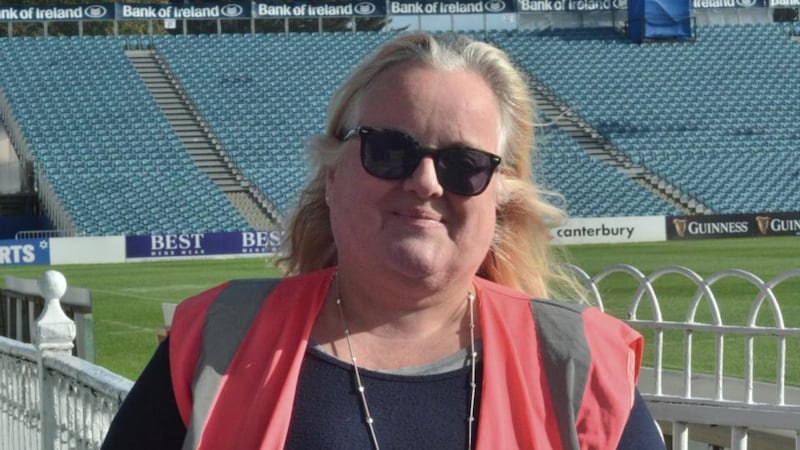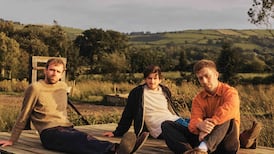With so many gigs, festivals and shows happening on a regular basis, it’s easy to forget the amount of work that goes into putting on a well-run event, something that is only highlighted when things go wrong.
Think of national psyche-level of trauma around the licensing issues of the cancelled Garth Brooks Croke Park gigs in 2014 or the Barbra Streisand 2007 Castletown House fiasco, where inadequate planning resulted in three-hour traffic delays, abandoned cars on motorways and inadequate seating arrangements.
To avoid these promoter pitfalls becoming national events themselves, hiring the right person to tick all the boxes across all aspects of running a big gig is a must. This is where someone like Sophie Ridley comes in. With more than 20 years of experience in event management as a safety officer and event controller, Ridley knows the ins and outs of big gig productions and how to plan to avoid such issues. Previous gigs include Boxed Off at Fairyhouse, The Big Grill and Beatyard in Dublin, Life Festival, The Police at Croke Park and the Ploughing Championships.
Subject to licence?
We’re all familiar with the term “subject to licence” but what does it mean? How does an event tick all the boxes to be allowed to go ahead? A licence is needed for any event with a capacity of more than 5,000. The safety officer is in charge of the event-management plan, the licence application and deals with the local county council in terms of conditions.

“First of all you have to have a pre-submission meeting, which is a new thing since the Garth Brooks fiasco,” Ridley says. “You set out your case for why you should be allowed put tickets on sale in a meeting with the local council, the Garda, the fire department, HSE emergency management and environmental health. Then, 13 weeks before your event, you have to have a licence application in. As it’s a planning law thing you have to put a note in the papers, and then you pay a licence fee of around €2,500 and you set out an event-management plan, which basically sets out how you’re going to run your event.”
The plan details the people involved in the production, the artists, capacity, structures, whether camping is offered, exits and entrances, crowd profile, site layout, security, toilets and more in a standard format 50- to 60-page document.
That document is then the subject of meetings with all the stakeholders that results in receiving the licence subject to conditions four weeks out from the event (hence subject to licence), as well as agreements with the fire officer and the Garda about how many police will be on site, and how much you are paying for them to be there.
After that, there’s a pre-event planning meeting that takes place on the week of the event. “That’s the last meeting just to make sure you tick the boxes basically and that any outstanding issues are addressed,” Ridley says. “And then on the day before and day of, those stakeholders will come down and check you’re doing what you said you are doing.”
Misjudging your audience
Part of the planning is knowing that things can still go wrong and often those big issues are the result, in Ridley’s estimation, of a promoter misjudging their audience.
“There was only one road in and one road out,” Ridley says of the Streisand debacle. “You may think they’re all going to arrive by bus and and they all arrive by car. In the case of Streisand, quite a lot of them thought they were coming to an indoor gig despite the fact they were continuously told otherwise.”
Dance events have a different audience and with dance music comes, for example, the likelihood of more drugs at an event. Ridley says the cost of having the medical services on site for 5,000 people at a one-day event is in the region of €5,000, which is often underestimated by new promoters.
“You’ve no idea what’s going to turn up,” says Ridley. “This country goes through a cycle. We had two or three years when drugs weren’t very problematic at gigs in terms of there weren’t many people being sent to hospital or many serious issues.” This year, though, drug misuse has again become an issue.
"Four years ago there was a bad drug out there," says Ridley. "It was green rolexes and green apples, which by the time they got to Electric Picnic were blue ghosts. This year again the drug casualties to hospital are very high but it just seems to be a mixture of drugs."
Drug testing
Some promoters are keen to address this in a similar manner to some UK festivals: by offering drug testing at events. The issue with drug testing on site is the legality of it.
“I don’t think we’re quite there yet in this country but it’s a good thing to do,” Ridley says. “People are frightened that it looks like you’re condoning drug use. But if you accept that drugs are used in this country – not just at events but in pubs and clubs all over the country every weekend – you do what you can to prevent those getting into your event. Surely, the next step is to make sure that once they do get into events, that the drugs are what people think they are.”










